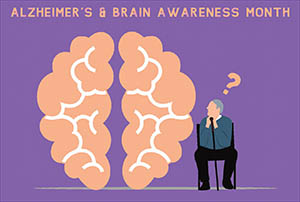There are many healthy and delicious food options for holiday meals.
By Dr. Annie Xu
Why is breast cancer screening important?
By Dr. Annie Xu
With the holidays upon us, many are excited about festivities filled with food, family, and fun. While preparing, I am reminded of the dietary needs of my family and patients living with high blood pressure (hypertension) and high blood sugar (diabetes). Hypertension and diabetes are very common and are “silent killers”. The American Heart Association estimates 1 in 3 U.S. adults have undiagnosed hypertension, and the American Diabetes Association estimates 1 in 30 U.S. adults have undiagnosed diabetes while 1 in 3 are prediabetic.
Many do not know they are affected until they unfortunately experience a complication from these conditions, such as a heart attack, stroke, nerve damage, or kidney failure. How can you learn about your risk? In the spirit of the holidays, talk to your family. There is a high genetic predisposition for these conditions. Also, go to your doctor to screen for these conditions.
Living with diabetes and high blood pressure does not mean living a bland, tasteless life. Keep these rules in mind for a fun and healthy menu.
- Choose “no/low salt” or “no sugar” added options for canned goods, sauces, butter, or other prepacked ingredients used in cooking. Cooking with salt to taste is fine but keep extra table salt off the dinner table.
- For red meats, pick “round” or “loin” options. For ground meat, choose <15% fat.
- Fish and poultry are always better if possible.
- For desserts, consider sugar substitutes, such as stevia or monk fruit.
- Portion control is everything!
Dr. Annie Xu is a local primary care physician at Hot Springs Internal Medicine Clinic, who specializes in chronic care management, women’s health, and general practice medicine. Her clinic is located at 301 Exchange St, Hot Springs. To schedule an appointment, call 501-621-4222.









